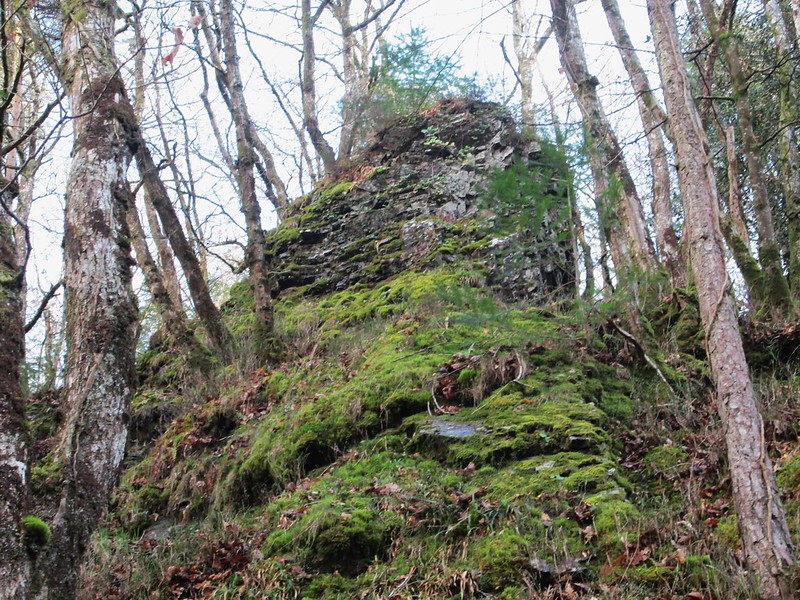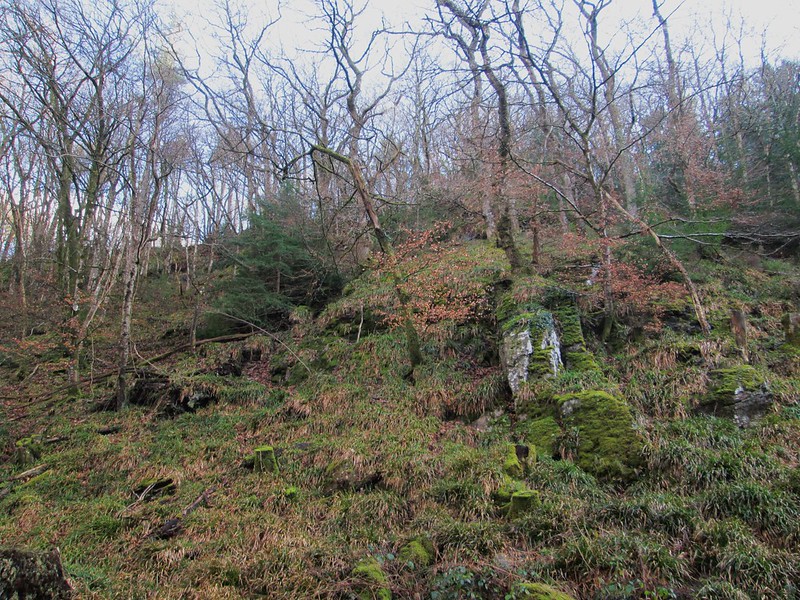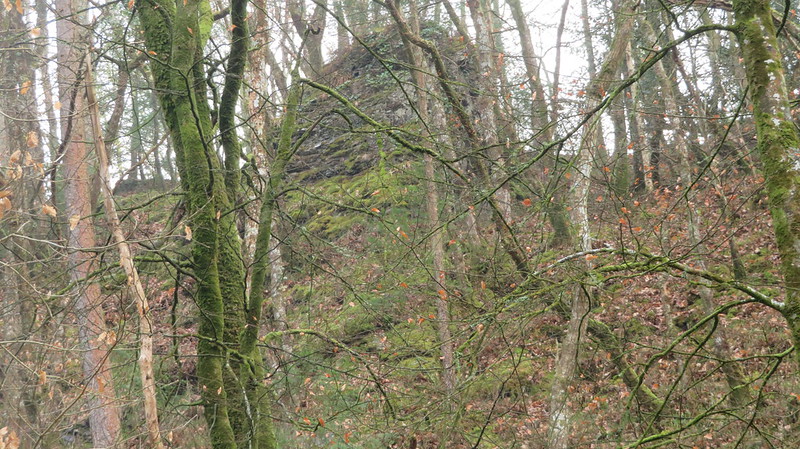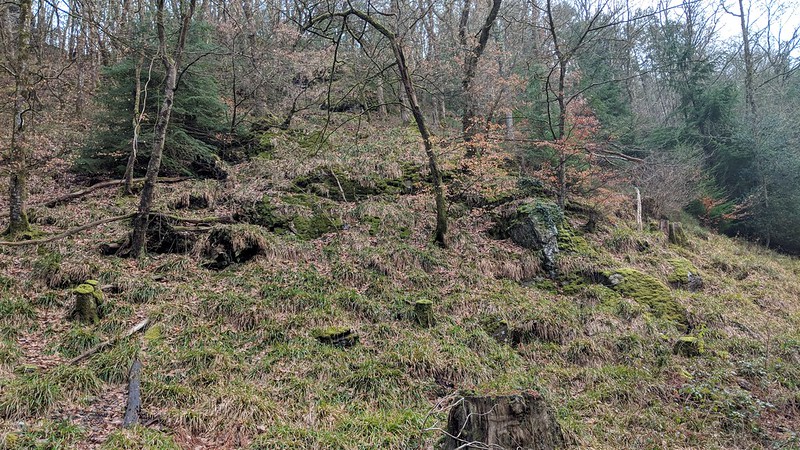TORS OF DARTMOOR
a database of both lesser- & well-known rocks and outcrops
Butterdon Ball Wood Tor In Butterdon Ball Wood at its northern edge in part of the complex referred to collectively as Fingle Woods, is this small tor set on the steep slope above and to the south of the track and river. Mostly concealed by vegetation in summer it nonetheless consists of at least three decidedly scruffy crags along with some considerable shale type rocks sprawling through the trees here. The tor was first noted by Tim Jenkinson whilst walking in the area in September 2015. The rocks are especially difficult to espy without climbing up the slope but the terrain underfoot is difficult to negotiate. Max Piper (2022) explains the situation: "It would be a real challenge and undertaking to get any closer as the hillside is fraught with loose stones." So in essence more work is needed in order confirm Tim's initial assessment of there being three crags here.  Above the foot of the tor and on more level ground high in the Wood are a series of at least fifteen so called charcoal hearth, or burning platform sites that are extensively documented on the Heritage Gateway website for Devon and Dartmoor. Charcoal production in forests is one of the oldest forms of forest exploitation and these artefacts have been surveyed on two separate occasions, first in 1985 by P. McCrone and again in 2017/18 by Matt Parkins when extra burning platforms were added. All of them are dated to around a period of between 1700 to 1950 AD and most that have been discovered are circular in shape with diameters of around 5 metres.  Walter Landgraf (2005) explains that charcoal is black carbon that is made from wood heated in a controlled burn with little air. This process prevents complete combustion of the wood. First, any water is steamed out and then the volatile compounds of creosote and tar are driven out giving a yellow-brownish smoke. The last step is the cooling of the remaining residue which is the black carbon (charcoal), and a small amount of ash. He explains that charcoal has many uses varying from crayons and as a pigment in ink and tattoos, to gunpowder and the glass industry. In addition to this it has been used extensively in medicine as antidotes to various maladies such as poison, bee stings, halitosis, upset stomachs and the removal of body odours.  The rocks here can be easily reached by following the riverside track in an easterly direction from Fingle Bridge for about a mile, but only if you are armed with an accurate Grid Reference (GR) will you be able to locate the exact spot from which to look uphill and see the crags. A visit in the winter months is therefore recommended as the rocks are more likely to be visible from below. The various burning platform remains are best accessed from above where a system of tracks and footpaths weave through the wood. GRs for all the artefacts so far located are listed on the Heritage Gateway site.
| ||||||||||||||||||||||||||||